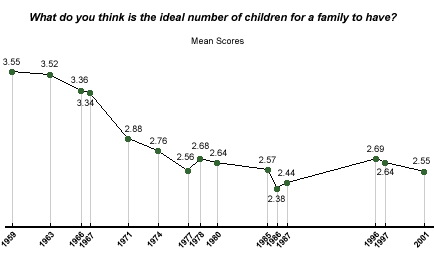The desire to have children is so inherent that all our civilizations are arranged around the family. Our religions and governments reflect the family structure and our legal systems defend it. In some cultures, infertile women have no social status at all. In America, the tick of the biological clock resounds through movies, music, art, even greeting cards.
So, what about women who simply cannot have a baby? After imploring Mother Nature, many turn to her representatives -- doctors.
It seems as though infertility has reached incredible proportions as many women continue to wait until later and later in life to conceive. In 1995, according to the National Center for Health Statistics, 9 million women sought treatment for infertility. Between 1996 and 1998, the number of infertility treatment procedures jumped 27%. The Journal of the American Medical Association predicts that by 2025, 5.4 to 7.7 million women will experience infertility. In a 1987 Gallup poll*, when surrogate motherhood was big news, a surprising number of Americans were willing to consider it. Gallup asked, "If you wanted a child, but could not have one because of fertility or other health problems, would you consider having a child by a surrogate mother?" Thirty-five percent (35%) said they would.
Sylvia Ann Hewlett, in her recent highly publicized book Creating a Life: Professional Women and the Quest for Children, suggests that women are routinely heartbroken to find that delayed childbearing is attended by infertility, and should consider having children earlier. But not all women agree. "I didn't want a baby at 20. I was a junior in undergraduate school. I was in no position at all to have a child -- I didn't have the maturity," said Dr. Patricia Sullivan, a clinical psychologist. It wasn't until she was 39 that Dr. Sullivan was ready to be a mother.
It's also possible that fewer couples want children. According to the U.S. Census Bureau, in 1980, 10% of women aged 40 to 44 were childless. In 2000, that number jumped to 19%. Forty years of Gallup polling shows a trend toward preferring smaller families -- in 2001**, when Americans were asked their opinions on the "ideal" number of children for a family to have, the mean number was 2.55. In 1980, it was 2.64, in 1971, it was 2.88, and in 1959 it was a full house, 3.55.

But Hewlett is certainly right in one respect -- many women don't even know that they've lost their ability to bear children until it's gone. In any given month, a woman in her 30s has a 20% to 30% chance of conception, according to the American Infertility Association. A woman in her 40s has a 5% chance. America is seized with a new debate -- whether it's best to start a family when the odds of conception are high, or wait until one's career is on track. Starting young can help avert fertility problems, but babies aren't cheap.
Unfortunately, neither are fertility treatments. Clomiphene citrate, a common ovulatory stimulant, is $10 a pill and requires five doses per cycle. Most women take it for three months. Stronger gonadotropins run about $1,000 a cycle. "We tried fertility pills for a month -- it cost $1,500 and was unsuccessful. I took a break for a few months, but by the time I was ready, and we could afford it, you couldn't get it in the United States. My doctor recommended that we fly to Mexico. In America, the drug was $75 an ampoule. In Mexico, it was $10," said Beth Rogers, a copywriter in Lexington, Neb. The trip to Mexico was worth it -- she became pregnant and is now the mother of twin six-year-olds. But not everyone is so lucky. If fertility drugs don't work, many couples try another method -- in vitro fertilization -- that is even more expensive at about $7,500 a cycle.
Key Points
Clearly, the number of women who don't feel ready for children in their early and mid-20s is growing, and people do not wish to have as many children today as they did 40 years ago. But once women finally decide they want to have children, they will go to great lengths to make it happen. As these trends continue, so will the demand for effective fertility treatments.
*Results based on telephone interviews with 1,221 national adults, aged 18 and older, conducted January 1987. For results based on the total sample of national adults, one can say with 95% confidence that the margin of sampling error is ±3%.
**Results based on telephone interviews with 1,012 national adults, aged 18 and older, conducted May 10-14, 2001. For results based on the total sample of national adults, one can say with 95% confidence that the margin of sampling error is ±3%.